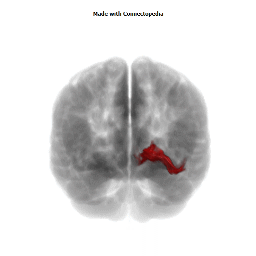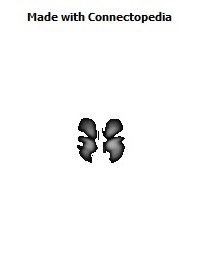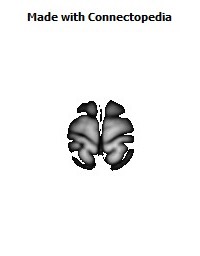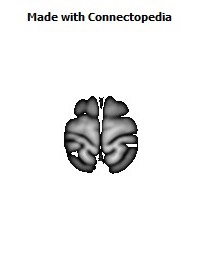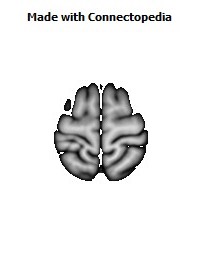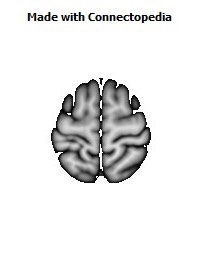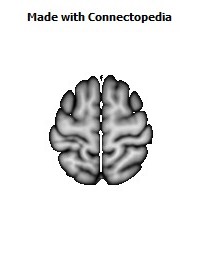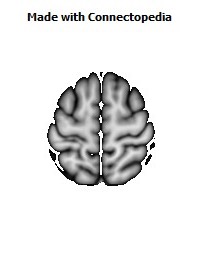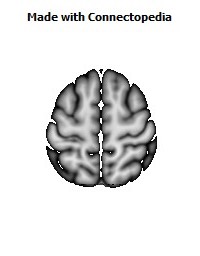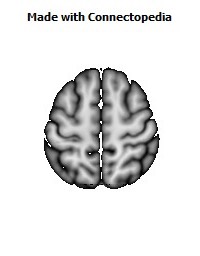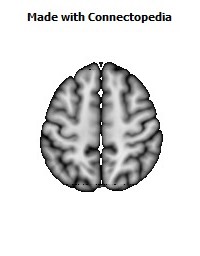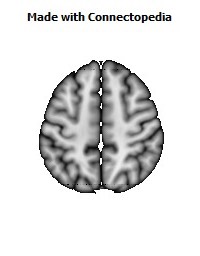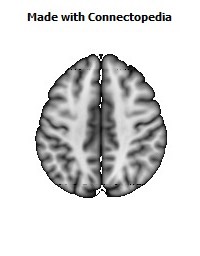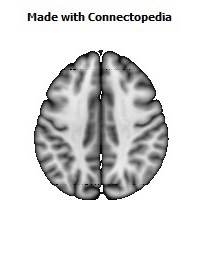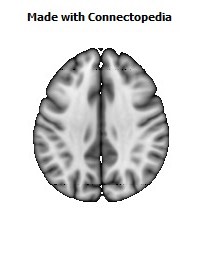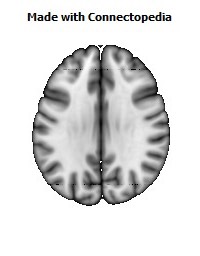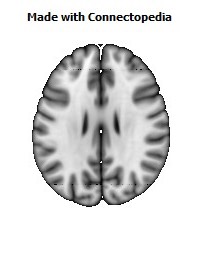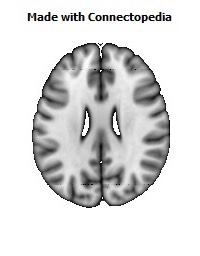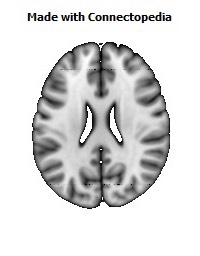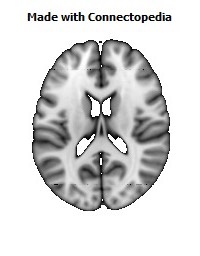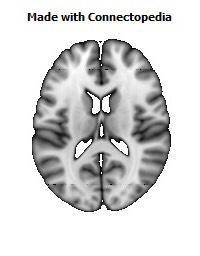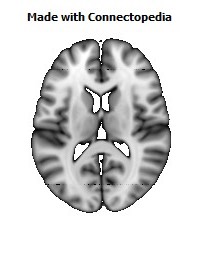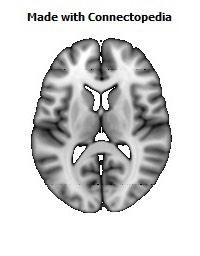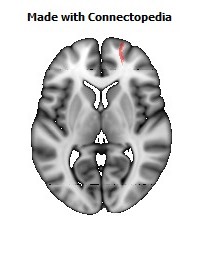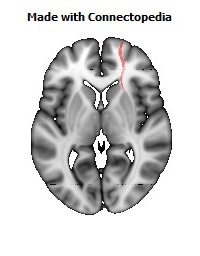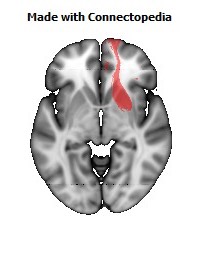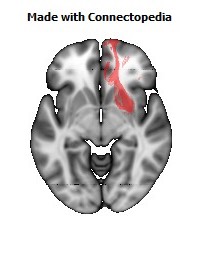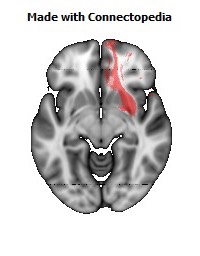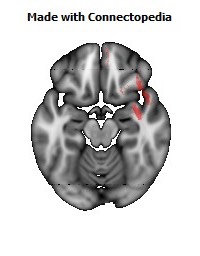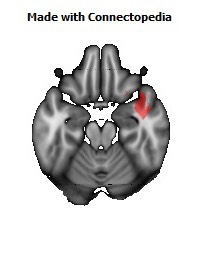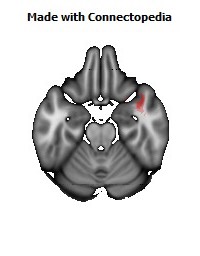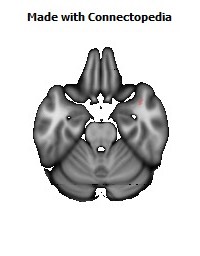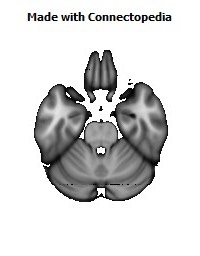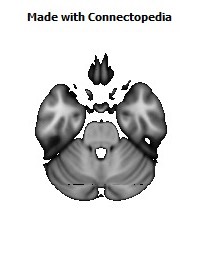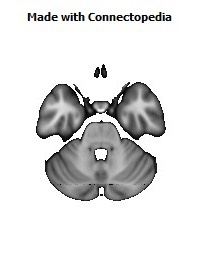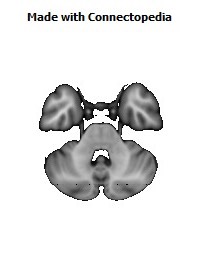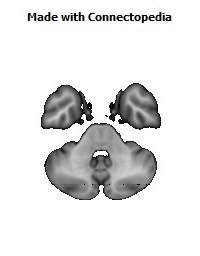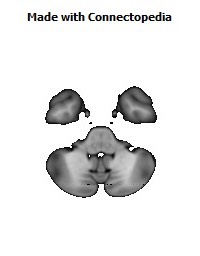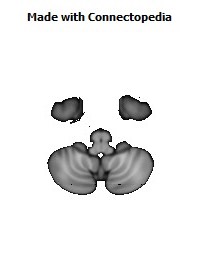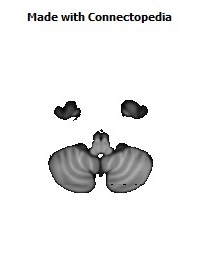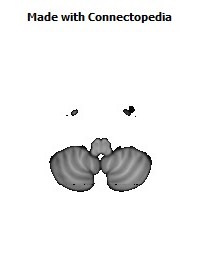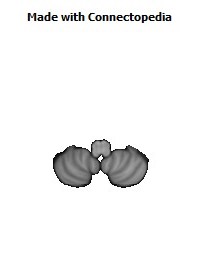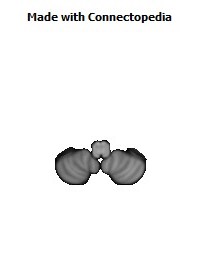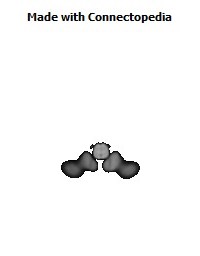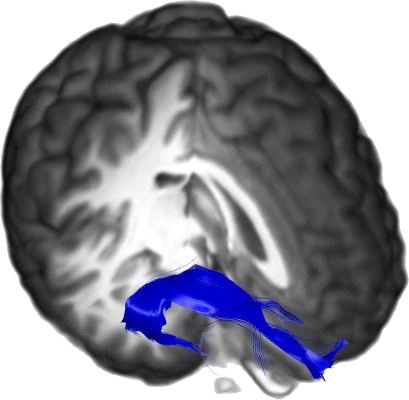
The uncinate fasciculus is a white matter tract in the human brain that connects parts of the limbic system such as the hippocampus and amygdala in the temporal lobe with frontal ones such as the orbitofrontal cortex. Its function is unknown though it is affected in several psychiatric conditions. It is the last white matter tract to mature in the human brain.
Anatomy
The uncinate fasciculus is a hook-shaped bundle that links the forward portions of the temporal lobe with the inferior frontal gyrus and the lower surfaces of the frontal lobe. It does this by arising lateral to the amygdala and hippocampus in the temporal lobe curving in an upward pathway behind the external capsule inward of the insular cortex and continuing up into the posterior part of the orbital gyrus.
The average length of the uncinate fasciculus is 45 mm with a range 40–49 mm. Its volume in adults is 1425.9±138.6 mm3, being slightly larger in men, at 1504.3±150.4, than women 1378.5±107.4.
It has three parts: a ventral or frontal extension, an intermediary segment called the isthmus or insular segment and a temporal or dorsal segment.
Uncinate fasciculi are asymetric ; usually right fasciculus is bigger than left.
Function
The function of the uncinate fasciculus is not known, though it is traditionally considered to be part of the limbic system.
The uncinate fasciculus on the left side shows greater fractional anisotropy (a measure of microstructural integrity) than on the right, and this has been argued to possibly link to the left hemispheric specialization for language. However, the use of electrical brain stimulation upon it fails to disrupt language, suggesting it might not be involved in language, though it is possible that this disruption failed to happen because it was functionally compensated by alternative pathways.
The capacity for autonoetic self-awareness that is re-experiencing previous events as part of one's past as a continuous entity across time has been linked to the right uncinate fasciculus as has proficiency in auditory-verbal memory and declarative memory to the integrity of the left uncinate fasciculus.
Development
The uncinate fasciculus has the longest period of development in terms of fractional anisotropy as it alone amongst the major white fibre tracks continues to develop beyond the age of 30.
It seems to be developmentally vulnerable. In 12 year-old males that were preterm, abnormalities measured by fractional anisotropy in the left anterior uncinate correlated with verbal IQ, full-scale IQ, and Peabody Picture Vocabulary Test-Revised scores. In 10 year-old children who have suffered socioemotional deprivation, the left uncinate fasciculus shows reduced fractional anisotropy compared to that in other children, and this might underlie their cognitive, socioemotional, and behavioral difficulties.
Clinical significance
Abnormalities within the fiber bundles of the uncinate fasciculus associate with social anxiety, Alzheimer's disease, bipolar disorder, and depression in the elderly that had first had it in adolescence or early adulthood.
Such abnormalities also link to schizophrenia,[In those with schizotypal personality disorder, reduced fractional anisotropy in the right uncinate fasciculus associates personality traits and clinical symptoms of ideas of reference, suspiciousness, restricted affect, reduced extraversion and social anxiety, while those on the left side associate with general intelligence, verbal and visual memory, and executive performance. The greater left than right fractional anisotropy of the uncinate fasciculus is missing in those with schizophrenia.
In 2009 it was implicated in psychopathy—individuals with a high score in the Psychopathy Checklist Revised and an associated history of violent behavior appeared to have abnormalities in it.
Phineas Gage ( a railroad worker who had an iron bar go through his frontal lobe) had damage done to his uncinate fasciculus, as well as his Left and Right Prefrontal cortex. After the accident, his intellect was untouched, but his personality transformed. He lost all sense of morality and concern for others.
Both Left and Right fasciculi are asymmetric:

